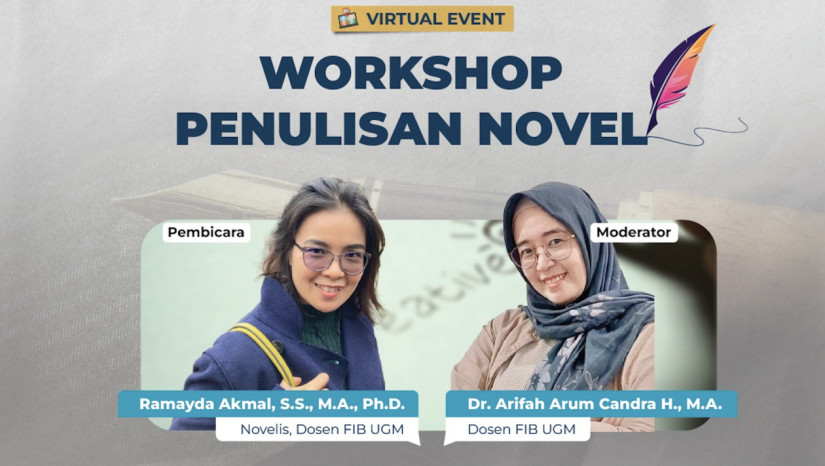
Literary works have always emerged as popular forms of self-expression in society. Several literary works by Indonesian writers and poets have been widely recognized, even internationally.
However, popular literary forms always undergo changes and developments according to societal interests. Universitas Gadjah Mada, one of the centers for knowledge development, supports the continuity and development of Indonesian literary works.
The UGM Directorate of Research and the UGM Faculty of Cultural Sciences (FIB UGM) are fostering and revitalizing public interest in literature by hosting an online Novel Writing Workshop on Wednesday (Apr. 3). The workshop featured FIB UGM lecturer and novelist Dr. Ramayda Akmal as the main speaker.
Dr. Akmal mentioned that creating a good literary work requires a process. Writers need to understand the issue they want to address and the flow of the story and choose a writing style to effectively convey the message to readers.
“The value of a work is not about how many novels, poems, or other works you can publish, but rather the process you go through. Regardless of how long it takes. Before writing, it’s also important to consider our interests and talents. Some may be interested in poetry, while their talent lies in short stories. That’s entirely possible,” Dr. Akmal explained.
As a writer, she understands well how complex it is to pour one’s expression and package it into literary form. She recounted how she began writing one of her novels, “Jatisaba,” which narrates the fate of Indonesian migrant workers who lack state protection.
Dr. Akmal brings social narratives by depicting immigrant workers’ suffering and bleak lives. This work was first printed in 2009 and reprinted in February 2024. She explained that quality novel concepts and stories require research and a long contemplation process.
For beginner writers, Dr. Akmal recommends starting with novels as a form of initial work and a first learning method. The freedom to write novels allows authors to choose various story ideas. Inspiration can come from any small aspect of life, such as historical events, significant occurrences, diaries, tragedies, myths, and more.
“Story ideas can come from anywhere. They can be from close relatives. For example, my uncle, who believes in Javanese mysticism, that’s interesting. We develop some of his character traits into a story framework. It can also come from a small and simple thing, but in developing the plot, it carries significant history,” she elaborated.
Another aspect to consider is understanding the strategic space in writing, which is the balance or suitability between the reader’s desires and the author’s idealism. Readers may be very interested and able to follow the author’s storyline, but on the other hand, the author also needs to know the readers’ expectations when reading their work.
Dr. Akmal also shared some tips and tricks for presenting a story that can satisfy readers. According to her, using less popular diction can create a unique atmosphere in a novel. She admitted that one of her writing habits is opening a dictionary.
Choosing less-known word matches invites readers to learn along with the story. Additionally, try to write descriptively and describe the atmosphere in the story with emotions and expressions.
“Writing is like a puzzle; each part is related to another, but each part is a story on its own. That’s what I mean by novels allowing us to incorporate many stories and connect them in such a way. A novel is a vast universe where the house, tree, and fence are connected, but the fence itself is already beautiful,” Dr. Akmal remarked.
She emphasized that literary works are not just forms of self-expression for the writer but also reflections and the writer’s responsibility for their work.
Author: Tasya
Editor: Gusti Grehenson


